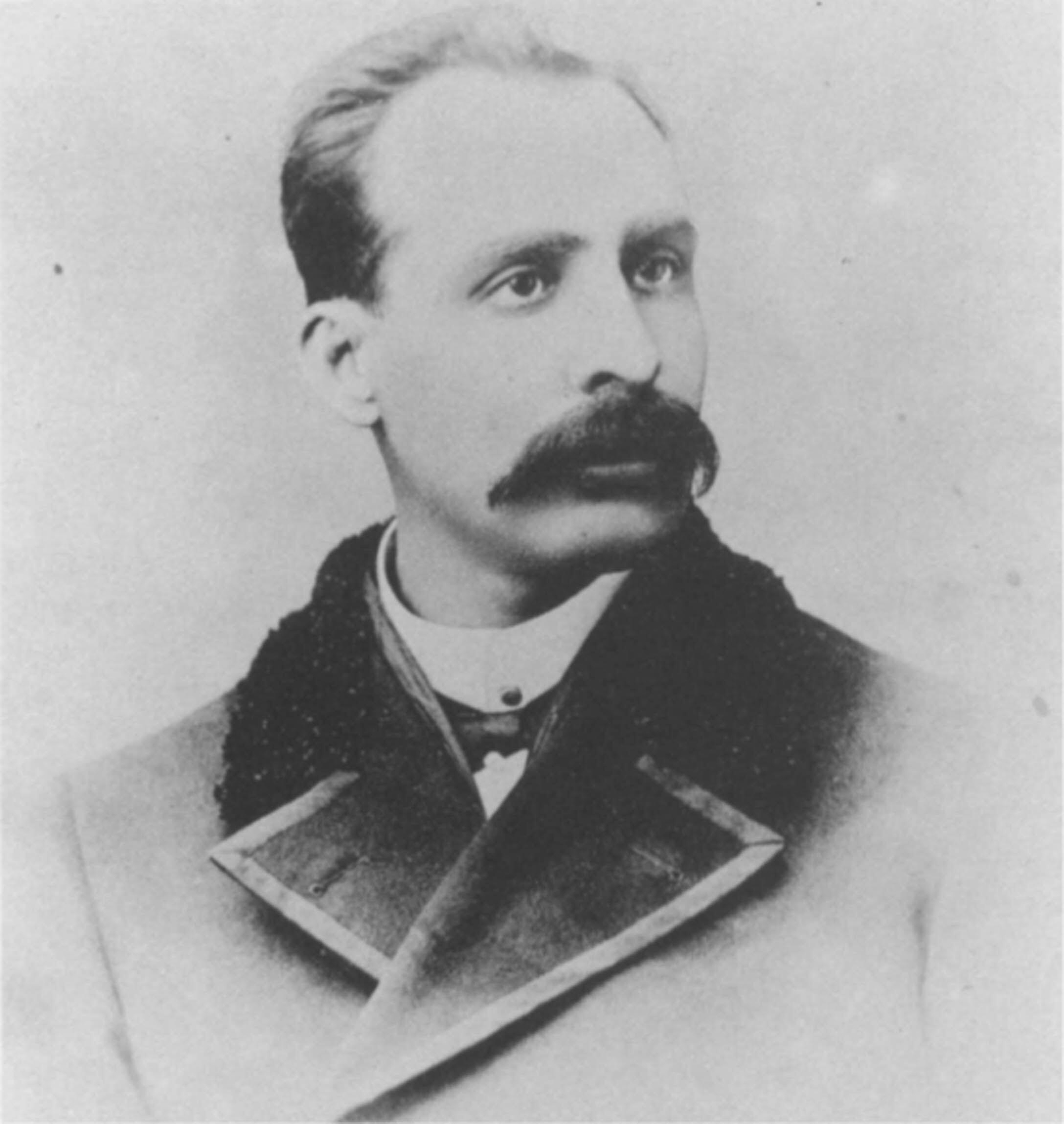
Mexican President Andrés Manuel López Obrador (AMLO) is a fan of a little-known late 19th century Mexican border revolutionary named Catarino Erasmo Garza. AMLO is so enamored of the border rebel and journalist, he even wrote a book about him in 2016. This January, during his morning press briefing, President López Obrador announced that he had organized a military commission to bring Garza’s remains back to Mexico from Panama to pay “homage” to this revolutionary.
AMLO’s fascination with Garza tells us a lot about his understanding of U.S.-Mexico relations, especially his opposition to U.S. domination in Latin America. However, the historical record shows that Garza was more than just an anti-imperialist revolutionary. He was also a fierce critic of authoritarian rule, a steadfast defender of a free press in Mexico, and a believer in more open borders. In fact, Garza and his soldiers rode into battle with clothing emblazoned with the words “Libres Fronterizos,” or Free Bordermen. Turning Garza into a national hero without taking all of his ideas seriously is a disservice to him and his legacy.
The mid-19th century was a tumultuous time in Mexico. The country had just been invaded by the United States (1846-48), which took half of its territory, and the French later imposed a Hapsburg Austrian archduke as emperor (1864-67). Liberals like Benito Juárez fought against foreign intervention, but also against conservatives, advocating for political liberty and democracy in Mexico.
Read More: Tens of Thousands Rail Against Mexico's President and Ruling Party in 'March for Democracy'
Born in Matamoros, Mexico, in 1859, right on the U.S-Mexico border, Garza got his start in journalism in small Spanish-language newspapers in South Texas. The border was much more porous then and people flowed freely across the boundary unimpeded by checkpoints or guards. In addition to writing about Anglo anti-Mexican violence, Garza condemned the brutality of the dictatorial regime of Mexican President Porfirio Díaz in his newspapers El Comercio Mexicano (Mexican Business) and El Libre Pensador (Free Thinker).
On one occasion, Garza publicly condemned both a U.S. sheriff in Eagle Pass, Texas, and a judge in Mexico as “criminal” for the killing of a 20-year-old Mexican man who had been arrested in the United States and handed to the Mexican government. Garza printed reports of this incident by fellow journalists in Mexico in his newspaper, insisting that he could “publish the truth with impunity” in the United States. In response, the governor of the northern Mexican state of Coahuila ordered Mexican rural guards to arrest Garza if he was caught on Mexican soil and tried to extradite him to Mexico. A U.S. judge refused, citing the likelihood that Garza would be killed if returned and pointing to evidence that the governor had already arranged a hit on Garza in Texas.
Garza was Díaz’s earliest and most serious political challenger. Díaz was a liberal president who came to power in 1876 by pledging that he would only serve a single term. He opened the country to foreign investment, ruled with an iron fist, and would remain in power for the next 34 years. Whether you were a journalist, a politician, a peasant, or an industrial worker, you were liable to be killed by Díaz’s military, the rural guard, or hired assassins if you threatened the pax porfiriana. Although it was not immediately apparent that Díaz would become a dictator, as opposition to his indefinite regime grew in the mid-1880s, Díaz increasingly relied on brute force.
Many opponents of Díaz’s regime fled to the United States and Díaz even sent spies and assassins across the border to eliminate threats to his power. In the summer of 1891, Díaz agents shot and killed Garza’s fellow anti-Díaz journalist, Ignacio Martínez, on the streets of Laredo.
This assassination led Garza to pick up arms and declare his revolution against Díaz on Sept. 15, 1891, Mexican Independence Day. “The last of the independent journalists,” Garza wrote, “today abandons the pen to seize the sword in defense of the people’s rights.” In his first revolutionary manifesto, Garza decried the “complete death of a free press and the unspeakable murders of many dignified and liberal writers.” The proclamation also called for free trade, free elections, and land distribution. At its height, Garza’s army of up to 1,000 men launched several incursions into Mexico. But the Garzistas were repelled in Mexico by Díaz’s military and then chased on the U.S. side of the border by the U.S. Army and Texas Rangers.
Garza was caught between anti-Mexican violence in Texas and Díaz’s terror in Mexico. Garza had broad popular support in South Texas, especially among Texas Mexicans, making it hard for authorities to capture him. Even local Anglo sheriffs and politicians, who depended on Texas-Mexican votes, helped Garza evade capture. Nonetheless, the combined weight of the U.S. Army and the Texas Rangers meant that it would only be a matter of time before he was caught or killed.
Six months after launching his revolution, Garza fled Texas. Over the next years he continued to develop his pan-American internationalist ideas, meeting with Cuban anti-colonialist leader José Martí and Colombian liberals who were battling conservatives. For Garza, freedom meant fighting for civil rights as well as confronting empire. For him, the battle against Díaz in Mexico, Spanish rule in Cuba, conservatives in Colombia, and for the rights of Texas Mexicans were all part of the same struggle.
In February 1893, Garza landed in Costa Rica, where he tried to ensure his own safety by remaining incognito. Once his identity became known, Garza published a pamphlet in September 1894 condemning the Mexican president. Garza even sent Díaz a copy of the pamphlet with a personalized inscription to the “eternal Czar.”
Garza was being recruited by liberals across the continent, but he was also being pursued by U.S. authorities who convinced the Costa Rican government to extradite him. Seeing his options closing in Costa Rica, he signed on with the Colombian liberals who were fighting against conservatives in Panama, which was then part of Colombia.
Garza died fighting in an attack in Bocas del Toro, Panama, on March 8, 1895. The U.S Navy sent a ship to intercept Garza and landed Marines in Panama to quell the liberal uprising that threatened U.S. interests in the Panama Canal.
Although Garza’s rebellion was crushed, his ideas of democracy, equity, freedom of the press, and anti-imperialism would find new life in 1910 when another cross-border revolution led by Francisco Madero succeeded in toppling Díaz. Some of Garza’s co-conspirators would go on to play important roles in the Mexican Revolution, the first social revolution of the 20th century which transformed Mexico by bringing Indigenous peasants and industrial workers onto the political stage. Garza had been killed, but his ideas lived on.
Read More: The Record-High Murders of Journalists in Mexico Make Me Fear for the Free Press in the U.S.
It’s impossible to know what Garza would make of AMLO today, but he certainly would not sympathize with his incessant attacks on journalists. AMLO’s recent doxing of Natalie Kitroeff, the New York Times’ bureau chief for Mexico, Central America, and the Caribbean is only the latest instance of his excoriation of journalists in his daily morning press conferences. These threats by Mexico’s leader are especially dangerous in what has become the deadliest country for journalists in the world.

And although AMLO has defended the dignity of Mexican migrants to the United States, he has been less welcoming of migrants in Mexico. Under AMLO, Mexico’s detention of migrants has skyrocketed, with more than more than 780,000 put behind bars in 2023. Mexico now has the largest migrant detention system in the hemisphere. These forms of border control run counter to Garza’s internationalist ideals and his own migration experiences.
The Mexican president has done much to help elevate the importance of Catarino Garza and his revolution, a forgotten story that reveals much about racism in Texas, U.S. domination in the hemisphere, and dictatorship in Mexico. But AMLO’s mixed record on strengthening democracy, curbing state violence, promoting a free press, and welcoming migrants suggests he should remember Garza also stood for a democratic Mexico where journalists and citizens are free to criticize their government. Rather than repatriating Garza’s bones, López Obrador should resurrect Garza’s ideas.
Elliott Young is the author of Catarino Garza’s Revolution on the Texas-Mexico Border and a professor of History at Lewis & Clark College.
Made by History takes readers beyond the headlines with articles written and edited by professional historians. Learn more about Made by History at TIME here. Opinions expressed do not necessarily reflect the views of TIME editors.
More Must-Reads from TIME
- Cybersecurity Experts Are Sounding the Alarm on DOGE
- Meet the 2025 Women of the Year
- The Harsh Truth About Disability Inclusion
- Why Do More Young Adults Have Cancer?
- Colman Domingo Leads With Radical Love
- How to Get Better at Doing Things Alone
- Michelle Zauner Stares Down the Darkness
Write to Elliott Young / Made by History at madebyhistory@time.com
